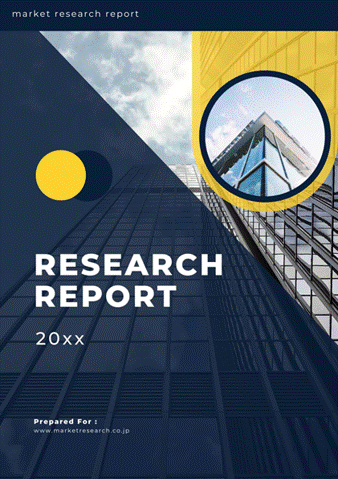 | • レポートコード:B-MOR-05515 • 出版社/出版日:Mordor Intelligence / 2018年3月 • レポート形態:英文、PDF、95ページ • 納品方法:Eメール(受注後2営業日) • 産業分類:Healthcare |
| Single User(1名様用) | ¥569,800 (USD3,850) | ▷ お問い合わせ |
| Team User(7名様用) | ¥592,000 (USD4,000) | ▷ お問い合わせ |
| Corporate User | ¥1,221,000 (USD8,250) | ▷ お問い合わせ |
• お支払方法:銀行振込(納品後、ご請求書送付)
レポート概要
The Asia-Pacific nuclear medicine market has been estimated to register a CAGR of 10% during the forecast period, 2018 to 2023. The growth of this market is due to the increasing preference for SPECT and PET scans.
Increasing Incidence of Cancer and Cardiac Ailments
Increasing incidence of cancer and cardiac ailments is the major driver of the market. Nuclear medicine shows a huge potential in treating cardiac and cancer diseases. According to Cancer Index, it is estimated that 6,763,000 new cases and 4,499,500 deaths occur every year due to cancer in the Asian region. Cardiology applications will continue to demonstrate strong growth in the market. Other factors, such as increasing SPECT and PET applications and growing public awareness for healthcare, are expected to drive the market in the future.
Strict Regulatory Guidelines
Regulatory requirements pose another hurdle to translational research and clinical investigations. For example, in India, all the approvals for nuclear medicine products are given by the Atomic Energy Regulatory Board (AERB), and, including diagnostic radiopharmaceuticals and radio therapeutics, undergo regulatory procedures by AERB. Similarly, in other countries, such as China, have full government infrastructure and corresponding legal system for the safety of nuclear medicine/radiopharmaceuticals. There are several regulatory departments in China to ensure the safety of radiopharmaceuticals, such as the State Food and Drug Administration (SFDA), China Atomic Energy Authority (CAEA), Ministry of Health (MOH), and State Environment Protection Administration (SEPA). Additionally, reimbursement hurdles for the manufacturer and high capital investment are also restraining the market growth.
Diagnostics Segment to Dominate the Market
The diagnostic radioisotopes segment is expected to account for the largest share of the Asia-Pacific nuclear medicine market due to the increased use of SPECT and PET for diagnosis of cardiac diseases, brain diseases, cancer, and many other diseases.
Key Developments in the Market
• April 2017: IBA Molecular and Mallinckrodt Nuclear Medicine LLC united created Curium – a world-class provider in nuclear imaging.
• January 2017: IBA Molecular had acquired Mallinckrodt Nuclear Imaging.
• October 2017: Bracco Imaging had acquired SurgVision.
Major Players: GE HEALTHCARE, LANTHEUS MEDICAL IMAGING, INC., BAYER HEALTHCARE, BRACCO IMAGING SPA, NORDION, INC., IBA MOLECULAR IMAGING, SIEMENS HEALTHCARE, CARDINAL HEALTH, INC., AND NTP RADIOISOTOPES, amongst others.
Reasons to Purchase the Report
• Current and future Asia-Pacific nuclear medicine market outlook in the developed and emerging markets
• Analyzing various perspectives of the market with the help of Porter’s five forces analysis
• The segment that is expected to dominate the market
• Countries that are expected to witness the fastest growth during the forecast period
• Identify the latest developments, market shares, and strategies employed by the major market players
• 3-month analyst support, along with the Market Estimate sheet (in excel)
Customization of the Report
• This report can be customized to meet your requirements. Please connect with our representative, who will ensure you get a report that suits your needs.
レポート目次1. Introduction
1.1 Market Definition
2. Research Methodology
3. Executive Summary
4. Key Inferences
5. Market Overview
5.1 Current Market Scenario
5.2 Porter’s Five Forces Analysis
5.2.1 Bargaining Power of Suppliers
5.2.2 Bargaining Power of Consumers
5.2.3 Threat of New Entrants
5.2.4 Threat of Substitute Product and Services
5.2.5 Competitive Rivalry within the Industry
6. Drivers, Restraints, Opportunities and Challenges Analysis (DROC)
6.1 Market Drivers
6.1.1 Increasing Incidents of Cancer and Cardiac Ailments
6.1.2 Increasing SPECT and PET Applications
6.1.3 Growing Public Awareness for Healthcare
6.2 Market Restraints
6.2.1 Short Half-life of Radiopharmaceuticals
6.2.2 High Capital Investment
6.2.3 Strict Regulatory Guidelines
6.2.4 Reimbursement
6.3 Opportunities
6.4 Key Challenges
7. Market Segmentation
7.1 By Diagnostics
7.1.1 SPECT Market
7.1.2 PET Market
7.2 By Therapeutics
7.2.1 Alpha Emitters
7.2.2 Beta Emitters
7.2.3 Brachytherapy
7.3 By Application
7.3.1 Oncology
7.3.2 Cardiology
7.3.3 Neurology
7.3.4 Thyroid
7.3.5 Others
7.4 By Geography
7.4.1 Asia-Pacific (APAC)
7.4.1.1 Japan
7.4.1.2 China
7.4.1.3 India
7.4.1.4 Australia
7.4.1.5 South Korea
7.4.1.6 Rest of APAC
8. Competitive Landscape
8.1 Mergers & Acquisition Analysis
8.2 Agreements, Collaborations, and Partnerships
8.3 New Products Launches
9. Key Players
9.1 GE Healthcare
9.2 Lantheus Medical Imaging, Inc.
9.3 Fujifilm Corporation
9.4 Bracco Imaging SpA
9.5 Nordion, Inc.
9.6 IBA Molecular Imaging
9.7 Siemens Healthcare
9.8 Cardinal Health, Inc.
9.9 NTP Radioisotopes
9.10 Others
10. Future of the Market